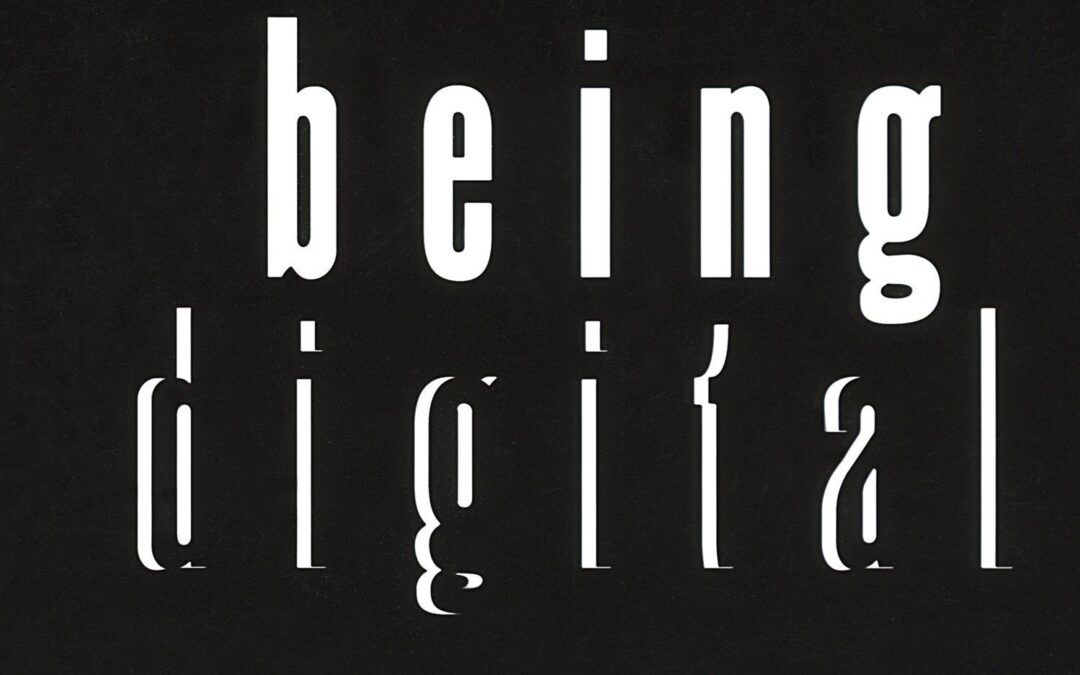


Tech Policy and Unintended Consequences
Technology is facing a substantial crossroads as policy changes with global resonance, such as China’s new crackdown on the country’s big tech companies (such as Ant Financial and Didi Global), the rising resistance to social media behemoths like Facebook, and the need for governments, whether in the United States, Western Europe, or China, to manage and control technological development. Regardless of any good intentions, this will add friction, inefficiency, and underperformance to the most dynamic global industry. The best intentions usually bring disastrous consequences. China cannot escape the law of unintended consequences. Trying to “manage” innovation and creativity takes away the often unplanned and serendipitous breakthroughs that make many significant advancements possible in the first place. From an economic perspective, capital is not going to invest in an uncertain environment where prosperity is managed and, despite great risk where most ventures will fail, the truly successful ones which make up for the losses and encourage capital to keep investing, will be mitigated. The vanguard of capital flight from China is beginning, and it will not ease if this policy and attitude are not revised. This attempt at “fairness and more equal distribution” will do nothing more than keep capital away and stifle any attempt at creativity, technical innovation, and economic advancement. The intention of this policy will yield the opposite outcome as a consequence. The signal means substance. Substance means innovation, creativity, and competitive dynamics that create the most effective innovations, the best solutions, and the most sustainable companies. Central planning, bureaucratic industrial policy, government-led economic management, and dictatorial focus have always failed, and always will. The US should not fall into this trap, regardless of how appealing it may be.
It is only noise.

Digital Assets, the Environment, and Green Energy
Digital currencies, crypto assets, digitized securities, and distributed ledgers require an enormous amount of power. While the combination of these assets is subject to tremendous hype, the environmental impact has been mostly ignored. However, this is changing because there has been increasing alarm about crypto’s carbon footprint and environmental impact. While there are attempts to use alternative energy, such as solar farms, thermal heat, and wind farms, sustainability for processing digital assets is still evolving. One thing is clear, as advancements are made in clean and renewable energy, digital asset mining will reduce its requirement for carbon-based energy. This is an essential trend if digital asset processing is to be sustained as an important component of global finance. The trend toward digital assets disrupting global finance is irreversible, thus green energy solutions are essential, and a condition precedent in order to participate and profit from this economic opportunity. It is crucial for crypto mining to address the environmental concerns attached to digital asset processing and creation. There is an irreversible shift to decarbonization and lower carbon footprints. The digital asset market is not going to go away, but since energy is such a critical component, energy efficiency and green energy are the essential components to any long-term perspective of a digital asset strategy. The low-cost provider wins. With digital assets, that means the combining lowest carbon footprint with scale and the ability to connect to the electrical grid.

Digital Assets, Distributed Ledgers, and the Future of Capital Markets
“Distributed ledger technology and digital assets have the potential to dramatically disrupt global equity and debt markets.” (World Economic Forum, May 2021)
Distributed ledger technology (DLT), otherwise known as Blockchain technology, will radically simplify financial markets and, more importantly, fundamentally change the market’s infrastructure. Specifically, distributed ledger technology decentralizes critical data and enables an entirely new financial system where capital flows without the need for traditional intermediaries.
While there are challenges and numerous detractors, DLT is an irreversible disruptive force transforming capital markets and the global financial system.
Regulators (a potential obstacle) are increasingly comfortable with this technology. Distributed ledgers, decentralized finance, and Blockchain-based platforms are creating products and services evolving from exploration and experimentation to commercialization. DLT will be transformative to the world’s largest industry and represents an unprecedented opportunity. New digital platforms created by decentralized finance companies integrate securities and other digital assets comprehensively. The platforms enable market participants and intermediaries to issue, trade, settle, and provide custody services for digital assets, usually consisting of digitally native equity tokens (ICO’s).
These digital asset and financing platforms exist in parallel to existing market infrastructure and securities markets, in many cases offering an alternative digitized version of a standard asset class. Fundamentally, what is disruptive is that this new technology disintermediates all parties, creating effectiveness and efficiency in the transfer and recording of transactions that is unprecedented in legacy infrastructure

The 6000 Year Bubble
Gold is built on a collective belief in its value. There is nothing fundamentally “inherent” in the price attributed to gold other than an agreed-upon value. The same is true with Bitcoin and other crypto. In fact, it’s fair to say that all asset prices are fundamentally based on the collective belief about value regardless of some perceived upon “inherent” value.
The pervasiveness of crypto as it exits a somewhat self-contained digital world and has institutional investor attention forming a basis for far-reaching financial transactions establishes it more as an economic force much more than a financial sideshow.
Game Theory contends that people act collectively if they believe others are doing the same. Essentially, the theory holds that many situations provide a clue, called a “focal point” around which people coordinate their actions, even if there is no explicit agreement to do so. As John Maynard Keynes has said, picking investments is much like guessing the winner of a beauty contest. It is not a matter of what you think, but it is predicting who most people think the winner should be. This is how markets move and it is based on a fundamental tenet of game theory.

Being Digital
“Being Digital,” the groundbreaking book by Nicholas Negroponte described what happens to a global economy when all assets can be digitized. Presciently predicting the impact on music, film, retailing, and commerce in general, Negroponte intuitively understood the disruption and the creative/destruction that would be unleashed when a globalized infrastructure could deliver all products and services, including assets and intellectual property, instantly via a worldwide digital infrastructure and network.
The same “digital” effect is impacting global finance today. Now, all financial assets are “being digitized” and can be delivered instantly on a global infrastructure, fundamentally upsetting the world’s largest industry with unprecedented creativity and destruction.
Crypto assets are the manifestation of that digital form. While there is debate about whether or not an asset can truly be “digital,” the market has spoken. While there will be continued volatility, speculation, creation, and destruction, a digital platform for financial transactions ranging from the simple transfer of funds to complex financial transactions, investment, and lending are here, disrupting a multiple trillion-dollar industry.

It’s a Crypto Asset, Not a Cryptocurrency
Bitcoin is an innovative, rapidly expanding network for storing and exchanging value among investors.If it’s an asset, does it have an inherent value, like gold? Arguments about “inherent value” are, and always will be, meaningless. Is there really some kind of “inherent value” in gold? We just decided it was valuable to us. The same is happening with Bitcoin.
It’s a cryptoasset that has the safe haven characteristics of gold and will potentially compete with it for a place in portfolios. Bitcoin is not a currency and will not be adopted as a new medium of exchange. It is not a stable store of value, nor can it be easily transmitted and exchanged for any good or service at a consistently predictable value. But, that’s not important from an investor’s perspective. Bitcoin remains incredibly volatile, and its correlation with other major assets has been inconsistent, but allocations are seen as suitable among an increasing number of investment professionals, and, increasingly, it is seen as an alternative investment equivalent to a derivative or other call options, given the potential for spectacular returns. The downside is well-defined while the upside can be asymmetric and significant.

Cryptocurrency and Digital Assets: Terror and Opportunity
Cryptocurrencies Hit New Highs. Should we be terrified?
Probably.
Bitcoin, Ether and, the most recent joke, frenzy, and punch line, Dogecoin, have increased 10x to 20x over the last 12 months. A spectacular return, but can it last?
Probably not.
The forces driving the eye-watering returns are the same as those that drove the insanity behind GameStop: the equivalent of a trading floor in every pocket funded with excess cash looking for disruptive investment opportunities and charging forward like an out of control herd – or lemmings – however you want to envision it. Cryptocurrency became the overwhelming target of Reddit day traders and mobs. Social media influencers, led by various forms of PT Barnum imitators like Elon Musk and many less sophisticated contributors, combined with the public listing of Coinbase to create a massive rally
Despite making inroads, Bitcoin and other digital currencies are still only a tool for speculators. There is no prospect of stable value enabling the fair exchange of assets for goods and services. It is a store of value, but much like any speculative asset, it can be a store value that fluctuates wildly.
That is not to say that some speculative assets, whether they be works of art, sports cars, or digital currencies can’t ultimately have long-term value and generate excellent investment returns. But digital coins are only one part of the digital asset platform, and will most likely prove to be a sideshow. The real opportunity for value creation, sustainability, and appreciation is the right business model and digital platform for the creation of digital assets that are easily and securely exchanged
